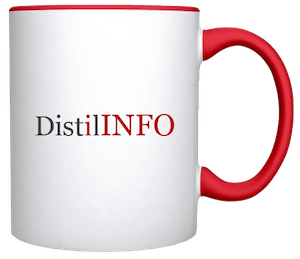 Just in time for the new year, CAST Business Associate CDW Healthcare and Senior Housing News have released “The Top 2018 Technology Trends That Will Transform Senior Living.” A separate article identified three benefits of integration and quoted Majd Alwan, senior vice president of technology and executive director of LeadingAge CAST.
Just in time for the new year, CAST Business Associate CDW Healthcare and Senior Housing News have released “The Top 2018 Technology Trends That Will Transform Senior Living.” A separate article identified three benefits of integration and quoted Majd Alwan, senior vice president of technology and executive director of LeadingAge CAST.
The CDW Healthcare white paper outlines the five technologies set to revolutionize senior living in 2018: wearables, the Internet of Things (IoT), telemedicine, voice activation, and security.
Wearables: Integrating health research into wearable devices will enable us to predict when acute episodes might happen.
IoT: Devices give residents control over their physical environment and generate data to help caregivers predict care needs. To get the most from IoT, senior living providers must be proactive.
Want to publish your own articles on DistilINFO Publications?
Send us an email, we will get in touch with you.
Telehealth: Videoconference health education to seniors, remote patient monitoring, computer and health literacy among older adults, and teleconsultations between patients and health care teams are leading changes in care delivery.
Voice Activation: Voice-activated technologies will increase, and users will become more comfortable with them. Data integration with these technologies will rise as well.
Security: Data security systems will become more important to providers, and safety watches will replace nurse call pendants. To prevent falls, use of personal emergency response systems (PERS) will rise, identifying when people have fallen and evolving to anticipate falls. Greater network infrastructure and connectivity will enable all this to work.
The white paper also identified system integration, interoperability, and building systems designed specifically for senior living as a top trend and requirement for 2018.
Importance of Interoperability and Integration
A follow-up Senior Housing News article, 3 Integration Lessons for Senior Living in 2018, identified three benefits of integration and quoted Alwan.
1. Integrated technology is more powerful than the sum of its parts. Senior living providers who take a siloed approach to technology are not getting the whole value of the technology, in part because the value of data from any given technology increases when paired with another.
The data pulled from an activity-tracking wristband is valuable on its own, for example. But when paired with the data pulled from another source, such as room sensors that monitor trips to the bathroom, or electronic health records, a provider gains a more complete perspective of a resident’s health.
The operational efficiencies also give providers a 360-degree view of residents. A resident’s telehealth wearables produce a steady flow of biometric data, such as heart rate, blood pressure, and glucose levels. Integrated technology enables that data to connect directly with a facility’s electronic health records.
“Your clinical staff is looking at the trends of the daily or even hourly biometrics,” Alwan told Senior Housing News. “And at the same time they have the background and information that is stored into the electronic health record being part of the full picture.”
2. When technology is integrated, the benefits go to operations, staff, residents — even your bottom line. The more a community is able to integrate its technology devices and systems, the better experience its residents and staff will have, the article continued. Better experience means higher occupancy rates and less staff turnover. And when providers can track data, they can be more precise with the information they provide to families about residents.
Alwan identified full voice activation as the most important technology integration in senior living that is closest to reality. He predicted residents will use voice-activated technology to manage everything from their televisions to telehealth screens that provide insights for physicians–an advancement that will benefit residents and staff.
“The value of technology and automation technology … comes from the ability to enter a piece of data once and have it be available wherever relevant, regardless of the system, making it available to other team members, regardless of the software system that they are currently using,” Alwan said. “So essentially, they would be losing efficiency.”
3. The barriers to technology integration are real, but manageable. In 2018, technology integration does not merely differentiate. It is critical to making senior living communities operationally efficient and to giving them the data they need to make the best care decisions.
The article lists these challenges for communities as they integrate:
- Technology that is designed for the consumer space doesn’t necessarily work for either seniors or for living arrangements with a multitude of users.
- Understanding the complexity of integration.
- Having the in-house resources or outside partners needed for integration.
Cost. - Alwan advises providers to keep interoperability and integration in mind early on in on their technology planning, selection, and vetting journey. “Work with vendors that either demonstrate integration, have open Application Program Interfaces (APIs), and/ or have a track record of working with third party system integrators,” he strongly recommends.
Read the full article for a deeper dive. If you’re looking for technology solutions that are interoperable or integration-ready, check out CAST’s Technology Planning and Selection Tools and products’ matrices, which emphasize the importance of interoperability and integration.
Date: January 17, 2018








